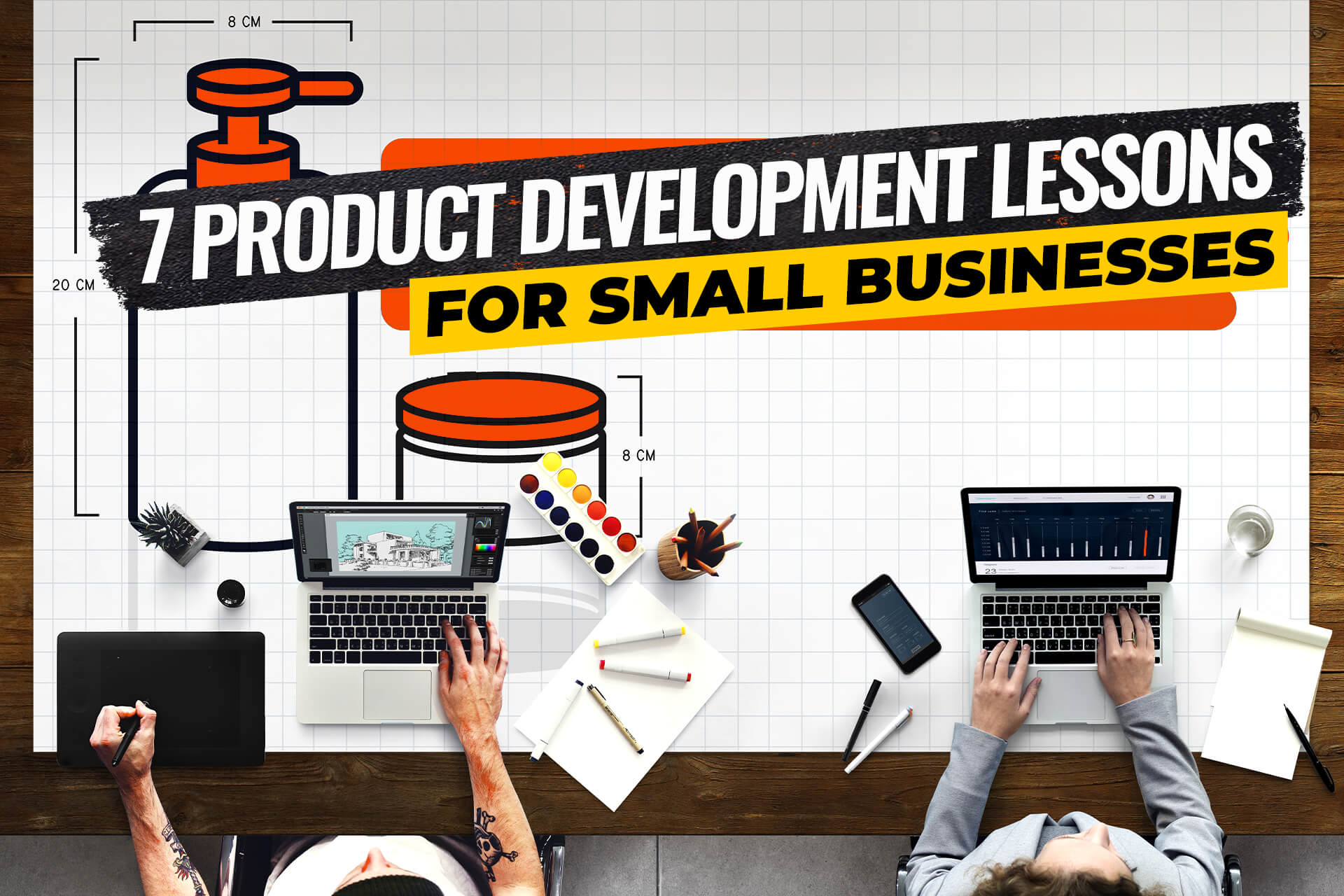John Lee Dumas started Entrepreneurs on Fire (EOF) in 2012, and today it has more than 142 million listeners and nearly 4K episodes. Kate Ericson joined the team 6 months in to build the systems and audience. Today the podcasting company makes around $1.8 million per year.
We talked with Kate about what she learned in launching EOF to its current success. We’ll share Kate’s tips for starting a podcast as we walk you through the process, which includes:
- What Is A Podcast And How Does It Work?
- How Much Does It Cost to Start a Podcast?
- How To Start A Successful Podcast
- Step 1. Plan Your Podcast
- Step 2. Decide on Your Podcast Format
- Step 3. Create a Podcast Brand
- Step 4. Get Your Recording Equipment
- Step 5. Select Audio Recording Software
- Start 6. Start Recording Podcast Episodes
- Step 7. Edit The Podcast Episode
- Step 8. Create Podcast Artwork
- Step 9. Add Podcast to Buzzsprout
- Step 10. Apply for Other Podcast Channels
- Step 11. How To Promote A Podcast
- Step 1. Plan Your Podcast
- Podcast FAQ
Click any of the links above to jump to the section that interests you.
What Is A Podcast And How Does It Work?
Podcasts are pre-recorded talk shows that people can download to computers and mobile devices. To create a podcast, you record your conversation and save it as a digital audio file on a podcast hosting service. The hosting service stores all your files on an RSS feed that can then be shared with your audience.
Some of the most popular podcast hosting platforms are:
- Buzzsprout
- Podbean
- Podcast Websites
- Simplecast
- Spreaker
You can then connect to an application called a podcast directory to provide easier access to listeners searching for podcasts. If the listener subscribes to your podcast, the RSS feed automatically adds new episodes to their device. You’re probably already familiar with some of the most popular podcast directories, including:
- Apple Podcasts
- Google Podcasts
- Spotify
- Samsung Podcasts
- Stitcher
- TuneIn
- Find a huge list of podcast directories
You can also add podcasts to YouTube, Patreon, and SoundCloud.
Can You Make Money With A Podcast?
Yes, you can make money from a podcast—but first, you’ll need to develop a following. When you try to monetize too quickly, you risk alienating listeners and harming your overall success.
Kate warned:
Listen to our interview with Kate below.
How Do Podcasts Make Money?

Podcasters have multiple streams of revenue you should consider. Kate provided us with EOF’s revenue streams and what percentage of revenue each drive.
Some of the most popular ways to make money from a podcast include:
∙ Sponsorship: 70%
∙ Affiliate Revenue: 13%
∙ Online Courses: 13%
∙ Physical Products: 4%
Check out the EOFire website to see the products they offer.
How To Make Money From Podcast
To make money from a podcast, you’ll need to:
- Release podcast episodes
- Develop a following
- Create offerings to sell your audience
- Set up a payment system
- Add a call to action to your podcasts
Entrepreneurs on Fire makes around $150K per month, but some podcasts earn $2.5 million monthly.
According to IBIS World, there are more than 55,000 podcasters in the U.S. competing for their share of a $227 billion market. The top seven companies account for over $27 billion, leaving the rest to average a million dollars each.
Later, we’ll discuss the funnel EOF uses to transition people from listeners to customers.
How Much Does It Cost To Start A Podcast?
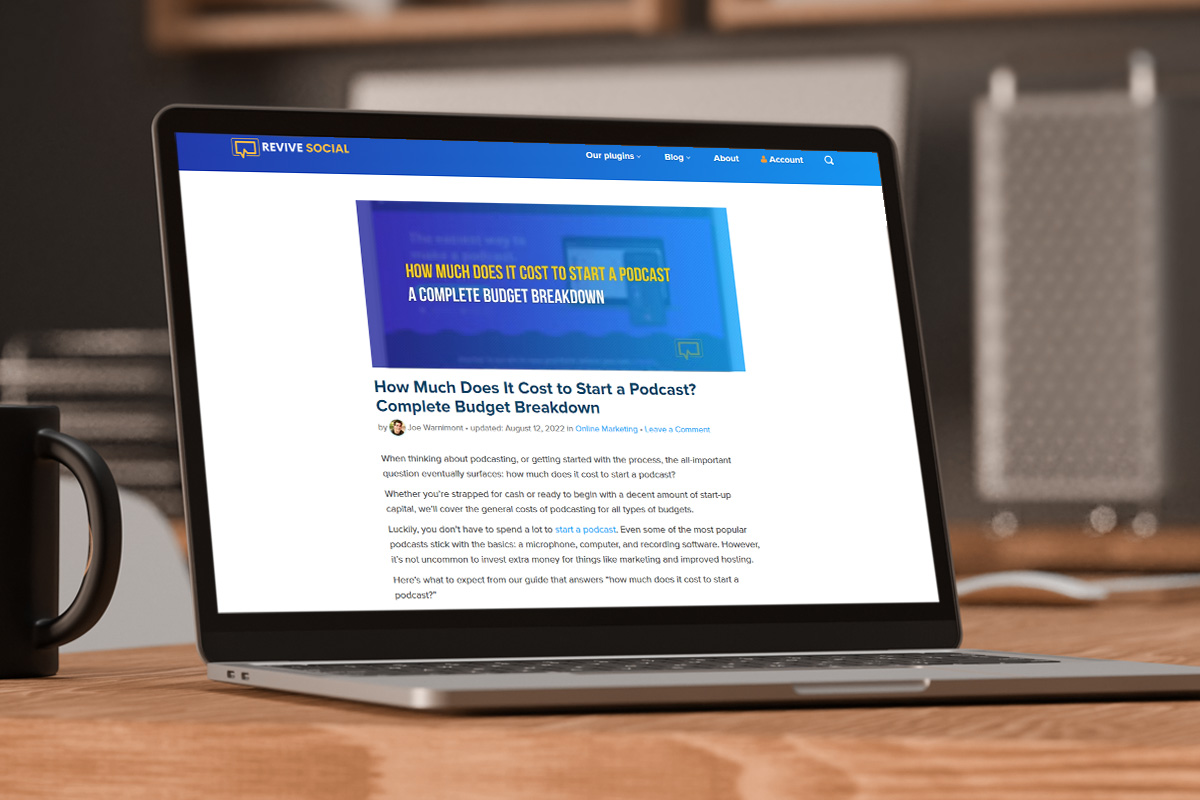
The cost of starting a podcast is impacted by both startup costs and ongoing costs.
Podcast Startup Costs
You’ll need to spend money on the following equipment when you start a podcast:
∙ Computer: $0-$3,000
∙ Microphone: $30-$400
∙ Headphones: $30-$400
∙ Mixer/Audio Interface: $50-$600
∙ Recording Software: $0-$200
If you already have some of the equipment, you may be able to get started for as little as $100. If you want to go for a professional setup right away, you may need as much $5,000 for equipment, plus another $1,500 or so to start an LLC, get business licenses, and advertise.
Check out Revive’s podcast equipment breakdown for entry-level, mid-grade, and professional equipment suggestions.
Ongoing Podcasting Costs
In addition to the startup costs, you’ll have consistent ongoing costs.
∙ Podcast hosting: $0-$100 monthly
∙ Music: $0-$50 monthly
∙ Transcription services: $0-$100 monthly
∙ Artwork : $0-$1,000 monthly (Time and quality impact the costs)
∙ Marketing: $0-$30 per 1,000 impressions on social media
How to Start a Podcast With No Money
You can start a free podcast by recording audio on your phone and uploading it to a podcast hosting service. This strategy will get you started for free because most software offers a free trial period.
The quality of the audio recording might not be great, but most entrepreneurs agree that the best tactic is to just get started, then upgrade as you can.
Next, we’ll show you how to start a podcast business.
How To Start A Successful Podcast

You’re here to learn how to start a podcast and get paid, so here’s the information you really need to get started. We’ve boiled the process down into 11 action steps:
- Plan Your Podcast
- Decide on Your Podcast Format
- Create a Podcast Brand
- Get Your Recording Equipment
- Select Audio Recording Software
- Start Recording Podcast Episodes
- Edit The Podcast Episode
- Create Podcast Artwork
- Add Podcast to Buzzsprout
- Apply for Other Podcast Channels
- How To Promote A Podcast
Let’s start with planning your podcast.
Step 1. Plan Your Podcast
Before you jump in, make sure to create a plan for your podcasting company. You’ll want to:
- Describe your goals
- Pick a theme
- Narrow your niche
- Choose a podcast name
Describe Your Goals
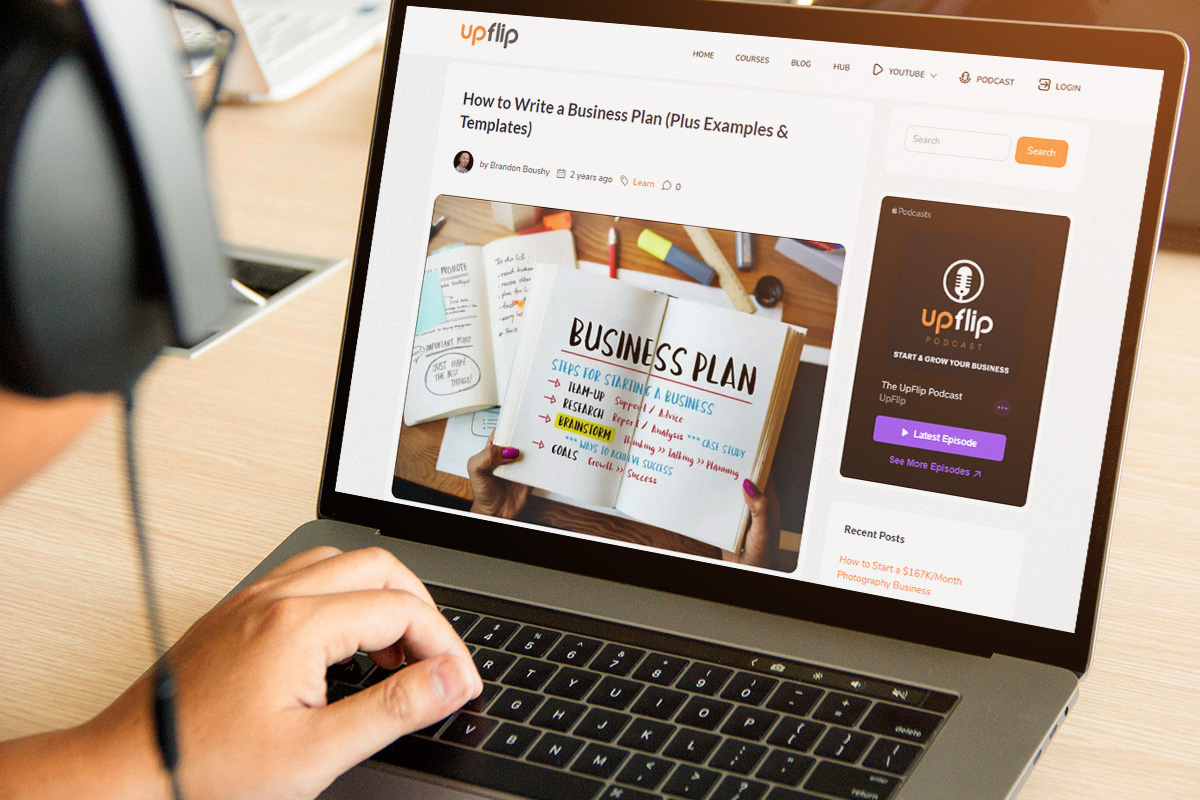
The first thing you need to do is define your goals. You might include information like this:
- The message you want to convey
- How you’ll convert listeners to leads
- Whether you’re trying to become an industry leader
- How you’ll monetize the podcast
Most podcasters don’t become famous overnight. They work years to get where they want to be. You’ll need something to remind you why you’re doing it when the times get tough, and looking back on your goals can be just that spark of motivation.
While starting a podcast doesn’t need a formal business plan, it doesn’t hurt to have one.
Pick a Podcast Theme or Topic
You’ll need to choose a topic for your podcast. There are common themes that do well, but you can create a podcast about any subject matter and potentially find podcast listeners.
Some of the most common podcast subject matters include:
- Crime podcasts
- Business podcasts
- Comedy podcasts
- Fictional podcasts
- News podcasts
While these subjects are trending on Apple podcasts and Spotify, there are plenty of other podcast topics to research.
Podcasters can often become burnt out as time goes on, as they talk about the same topics repeatedly. Find topics you enjoy, then research the competition. Find out what subjects do well and how to duplicate them in your style.
If you can’t think of at least 10 episodes during this phase, you’ll probably want to find another idea. Kate told us:
Narrow Your Niche
If your niche is too broad, your podcast audience might not be as engaged. If it’s too narrow, you may have trouble creating enough episodes on the podcast topic. Still, a more niche topic is more likely to stand out in a competitive field.
As a podcast maker, you might find this practice of narrowing subjects a good way to define your own podcast focus. Here are some examples:
| Broader Topic | Narrowed |
| Business | How to Start A Vending Machine Business |
| AI | AI Art |
| Eating Healthy | Healthy Eating for Cardiac Patients |
| Human Resources | Hiring Employees |
| True Crime | Female Murderers |
Now that you’ve got an idea of what topic to hone in on, you’re ready to give your podcast a name.
Choose a Podcast Name
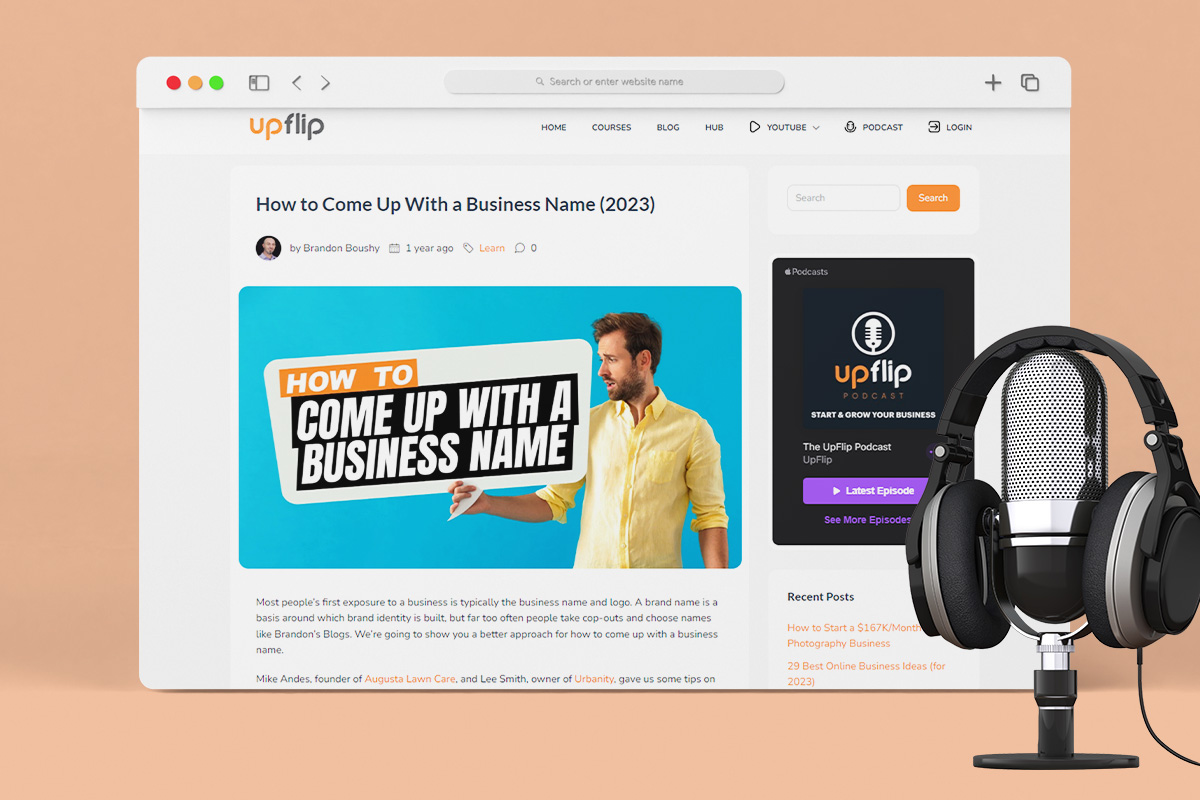
The name of a podcast is crucial to attracting attention, describing the episodes, and creating a brand.
Some websites, including Apple Podcasts, use the title for search, so make sure you think it through well. Then check to see if the name is available on social media and as a domain. Learn more about naming a podcast.
Step 2. Decide on Your Podcast Format
Podcast formats consist of three parts:
- The structure
- The length of each episode
- The frequency of posting
Podcast Structure
Different types of podcasts work well for different types of topics.
Ultimately you want to structure your podcast in a way that helps people know what to expect and that you find manageable. For instance, you wouldn’t want to record the reading of a book in the same way you’d record an interview.
The number of people involved in production and the podcast format will also impact editing and other aspects of the podcast. Consider trying some of these formats:
- Interviews
- News commentary
- Cohosted podcasts
- Scripted readings of fiction or nonfiction
- Educational podcasts
Also consider whether you’ll be doing just audio editing or audio and video format.
Length of Podcasts
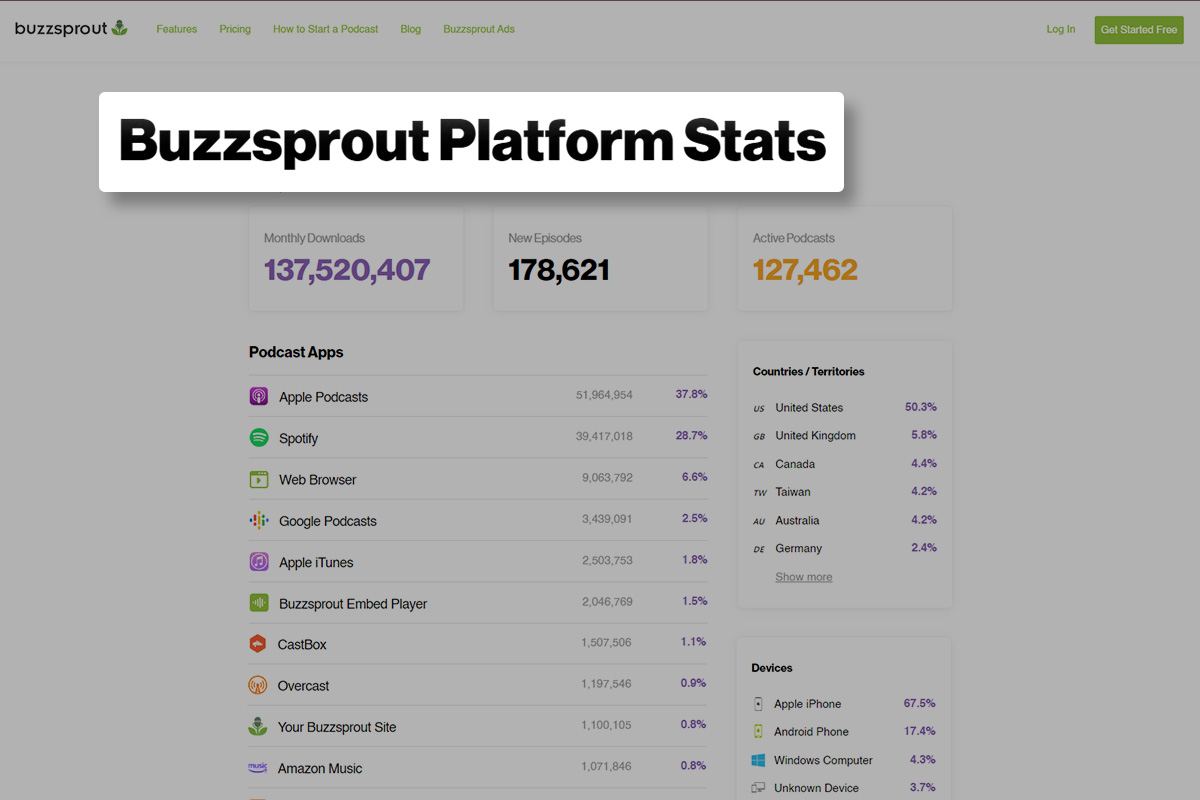
The length of your podcast will impact how difficult it is to record each episode and potentially your podcast hosting costs. If a podcast host site charges by file size, you may want to aim for shorter podcasts.
According to Buzzsprout, the length of a podcast is normally under 60 minutes, with 20 to 40 minutes being the most popular length, followed by 40 to 60 minutes.
Frequency of New Episodes
Most publishers suggest posting a new episode on the same day each week. Over a third of podcasts release new episodes weekly, but most currently post a new episode every 8 to 14 days.
Here’s the breakdown of how frequently podcasts post based on Buzzsprout statistics:
∙ 8-14 days (39%)
∙ 3-7 days (36%)
∙ 15-29 days (17%)
∙ 0-2 days (7%)
∙ Over 30 days (1%)
Step 3. Create a Podcast Brand
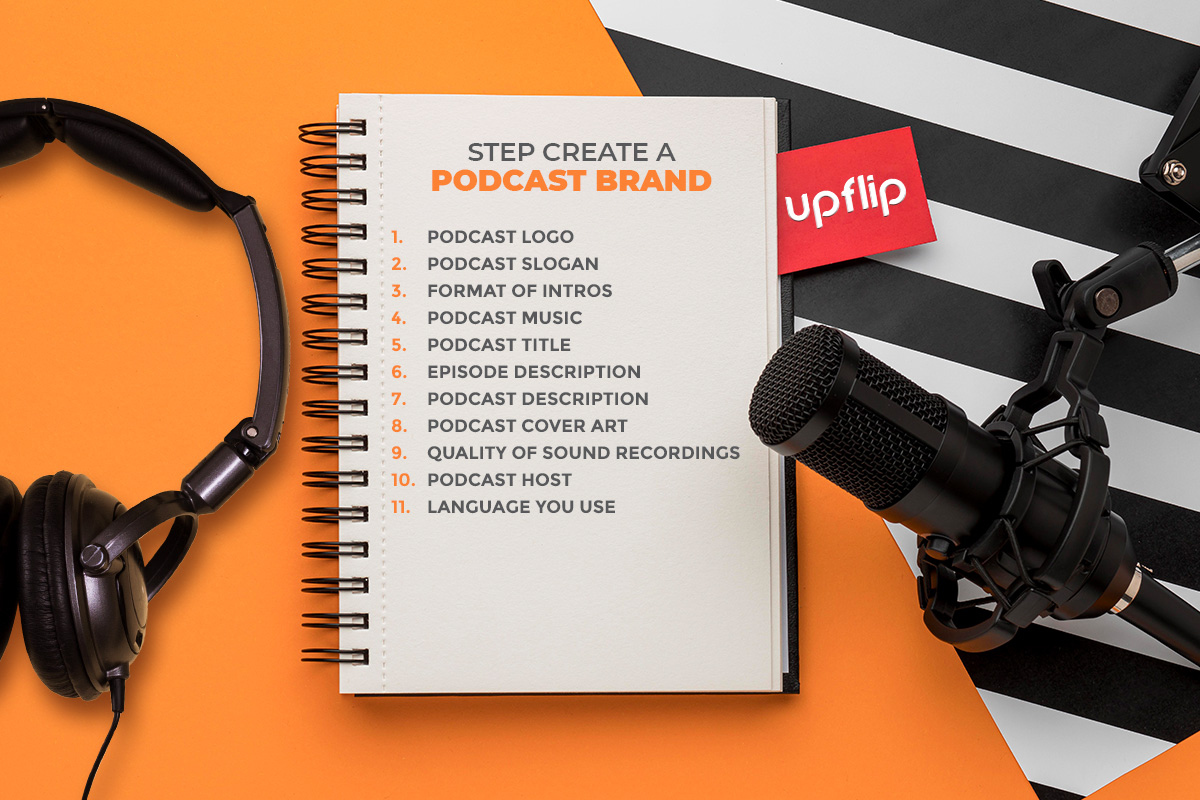
Next, you’ll want to think about how to create the podcast branding. Your branding will include everything you do to communicate what your new podcast is about. Your branding will include things like these:
- Podcast logo
- Podcast slogan
- Format of intros
- Podcast music
- Podcast title
- Episode description
- Podcast description
- Podcast cover art
- Quality of sound recordings
- Podcast host
- Language you use
There is so much that goes into branding, but it will help if you think about it before starting a podcast.
Check out your top competitors’ branding to get ideas of what works. Then read about podcast brand considerations.
Choose a Podcast Host
You can be the podcast host if you want, or you can hire a host, cohosts, or voice actors to record audio. The options are endless, but a podcast hosted by multiple people may experience times when they have difficulty scheduling time for podcast recording.
Step 4. What Do I Need To Start A Podcast?
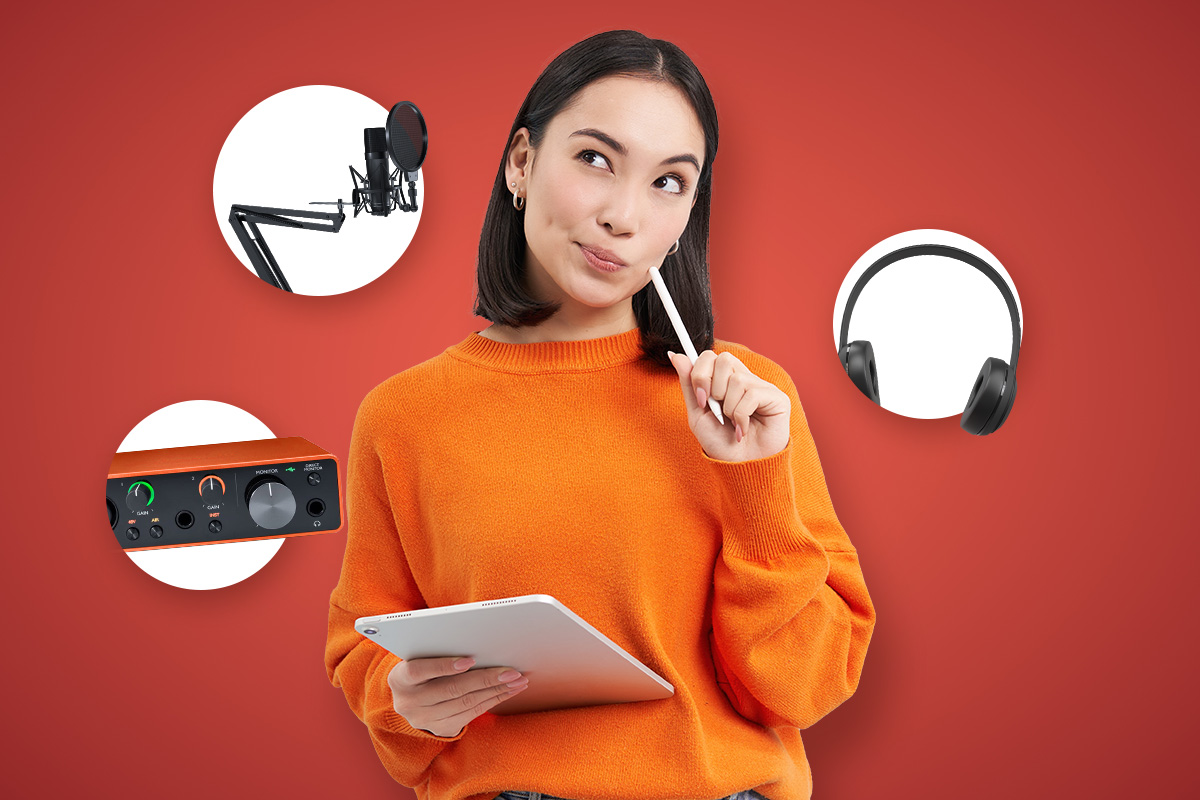
Next, you’ll need to get the podcast equipment you’ll use for podcast recording. We’ll discuss the information you need for both in-house and remote recording. This includes:
- Podcast Microphones
- Headphones
- Mixers
Podcast Microphone
An external audio recording device is the most critical piece of podcasting equipment you can get. A good podcast mic reduces background noise to improve audio quality and makes editing easier. Some of the best mics, in order of quality, are:
∙ Low: Podmic | $99
∙ Medium: Samson Q2U | $51
∙ High: Shure SM7B | $399
Let’s look at the different features podcasters should consider in microphones.
Dynamic or condenser
Dynamic microphones will be the go-to mic for podcasting unless you are starting a music podcast. Dynamic mics have less sensitivity and pick up lower sound frequencies, which means you’ll get less background noise and require less editing. Meanwhile, condenser mics are best for recording music with wider ranges of frequencies.
USB or XLR
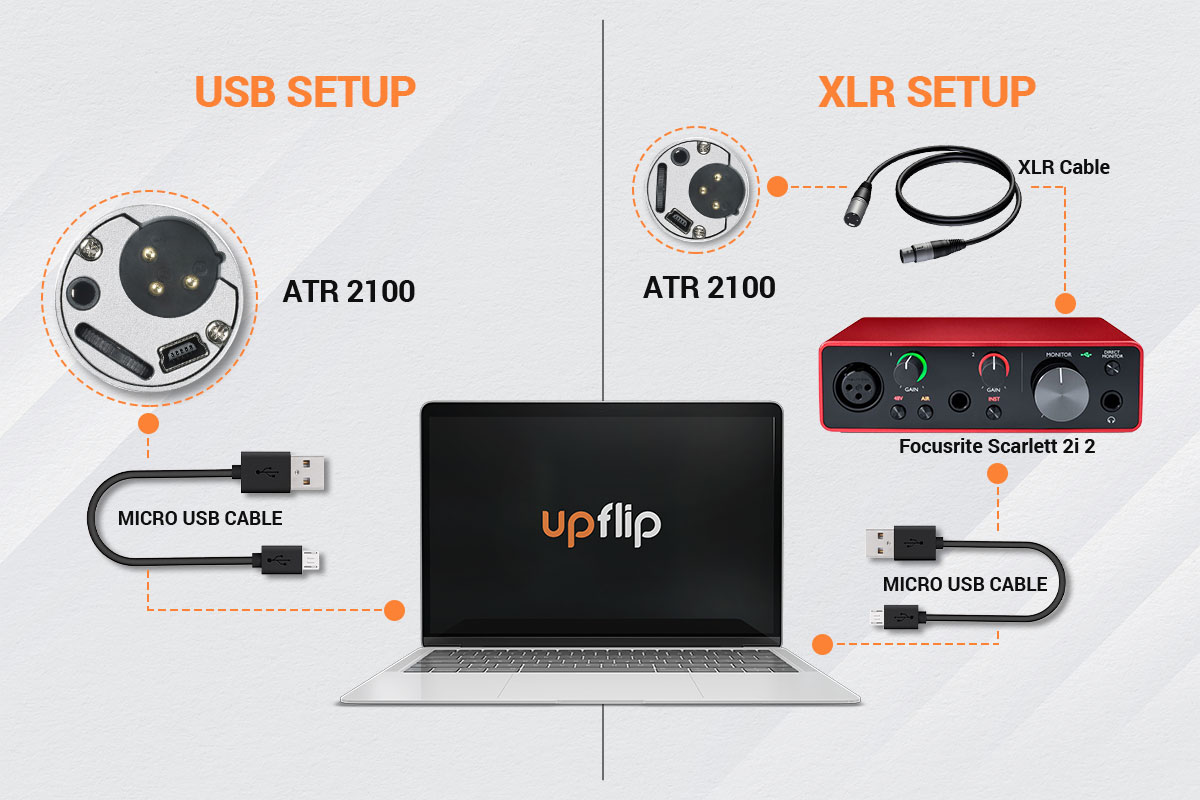
There are two main connectors for recording equipment. Your podcast setup can either be connected to your computer with an XLR or USB. People who are looking to start podcasting for beginners will probably want to use USB mics because they don’t require a mixer.
Meanwhile, XLR connectors are used by professional recording companies, musicians, and other people who want more control over their audio recordings.
Headphones
You’ll want a set of headphones for your podcast setup. If you already have some, you can just use those, but using higher quality closed-back headphones improves your podcast recording by:
- Helping you identify the best place to position the mic.
- Reducing the editing time.
- Preventing situations where you have to trash a podcast recording due to poor sound quality.
Check out the Audio Technica M20x for a best value headset.
Don’t Forget A Mixer
Mixers are helpful if you will have multiple audio inputs going into your recording and editing software. You’ll be able to use a mixer for things like:
- Controlling each input separately
- Livestreaming plus recording
- Intro music and other sound effects
- XMR mics
You’ll want to consider how many people will be on the show while making the podcast because you should normally have a channel for each person, plus any other devices you use. Some popular mixers you can get include:
∙ Focusrite Scarlett 2i2 | $160
∙ RODECaster Pro | $600
∙ Zoom P4 | $200
Other Equipment for Creating a Podcast
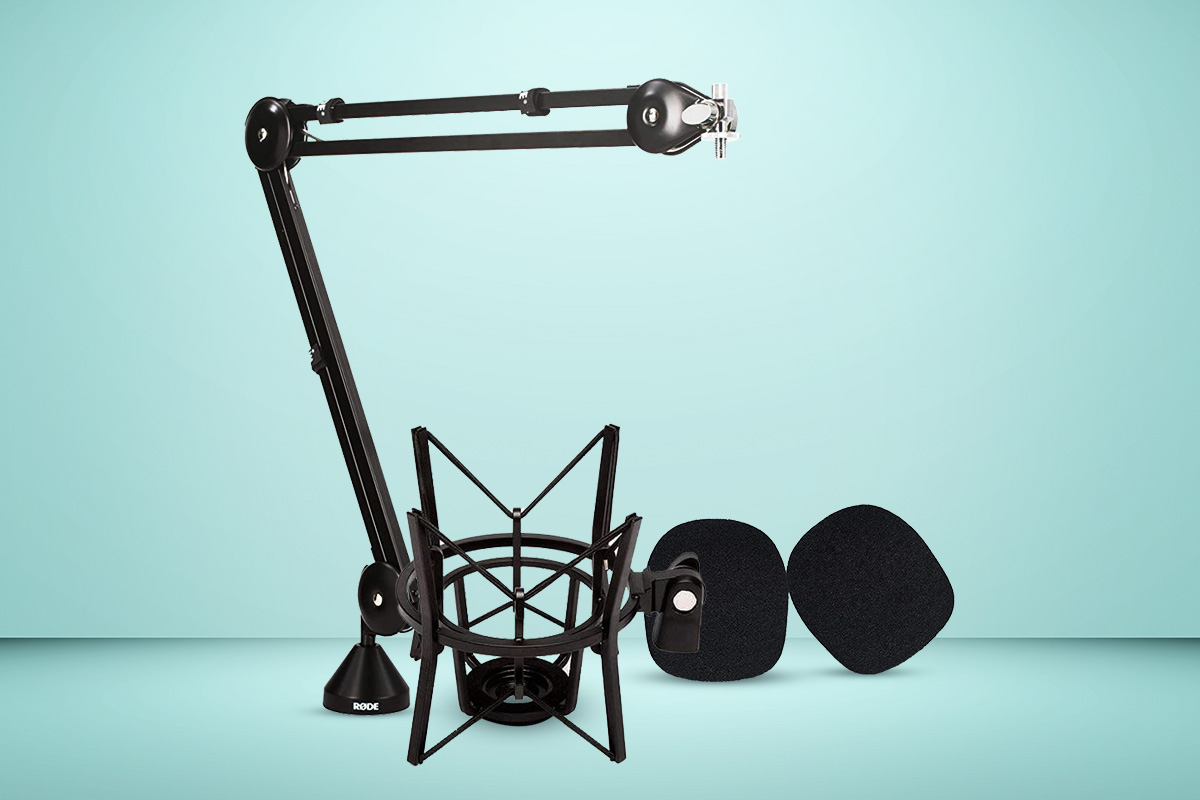
∙ RODE Boom Arm for Better Mic Placement | $120
∙ Shock Mount Vibration and Noise Reduction | $35-50
∙ Foam Ball or Pop Filter Noise Reduction| $6-$10
Keep reading to learn more about what you need to start a podcast.
Step 5. Select Audio Recording Software
You’ll need different kinds of podcast software when deciding how to start a podcast and make money. You’ll probably want the following types of podcasting software:
- Podcast Platform
- Remote Recording Software
- Editing Software
Let’s look at each type of software and its impact on making a podcast.
Podcast Hosting Sites

Podcast platforms offer numerous features that are beneficial to creating a podcast. Kate told us that EOF uses Libsyn for their podcast hosting needs. Here’s why:
Depending on your needs, there are plenty of other podcast hosting sites including:
- Buzzsprout
- Simplecast
- Podbean
There are many free podcast hosting packages available, but Kate warned:
Keep reading to learn more about each podcast website.
Libsyn
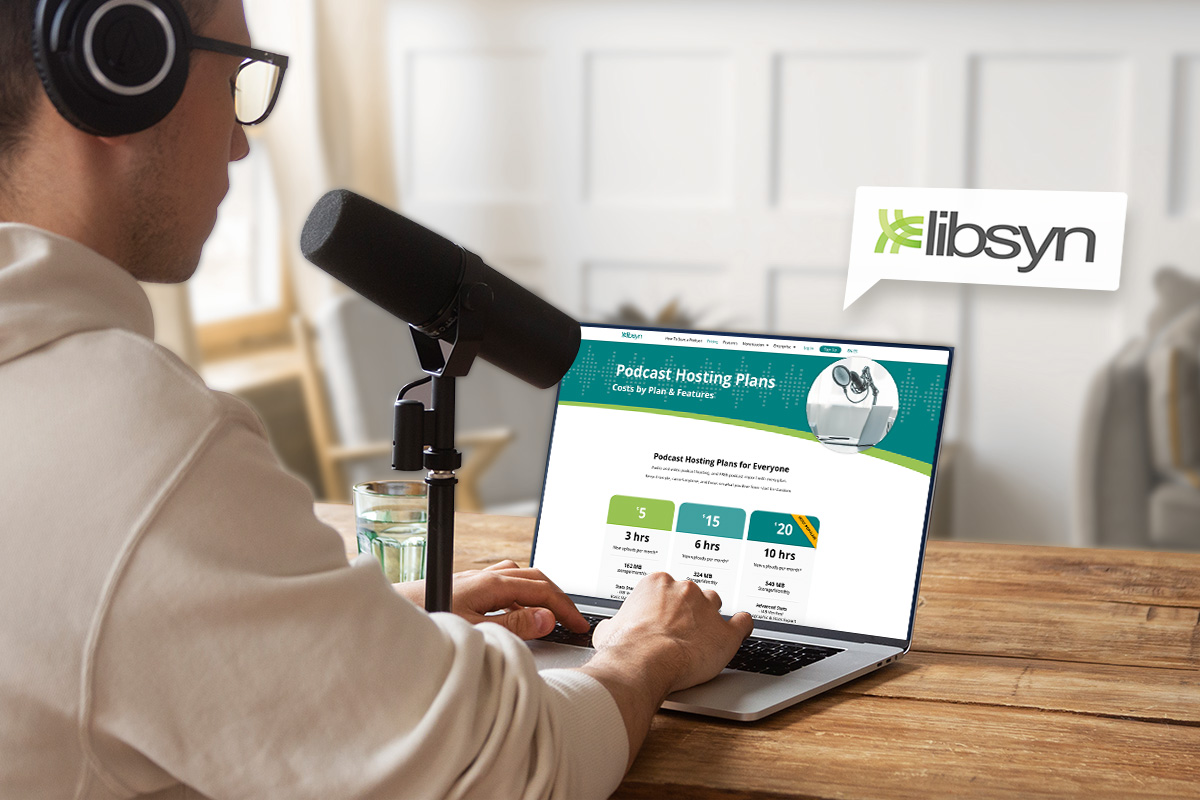
Libsyn offers six pricing plans ranging from $5 to $150 per month. Whether you offer audio files or video podcasts, the pricing is the same because they price their packages based on how many MB you upload each month.
Most podcasts will go with the $20 plan because it has some advanced features, including remote podcast editing that the lower plans don’t have. Other than that, the main differences between plans are the file length and storage size allowed each month. Other benefits include:
- Podcast Recording
- Dynamic Podcast Advertising
- Remote Recording
- Canva Cover Art Built-In
Buzzsprout
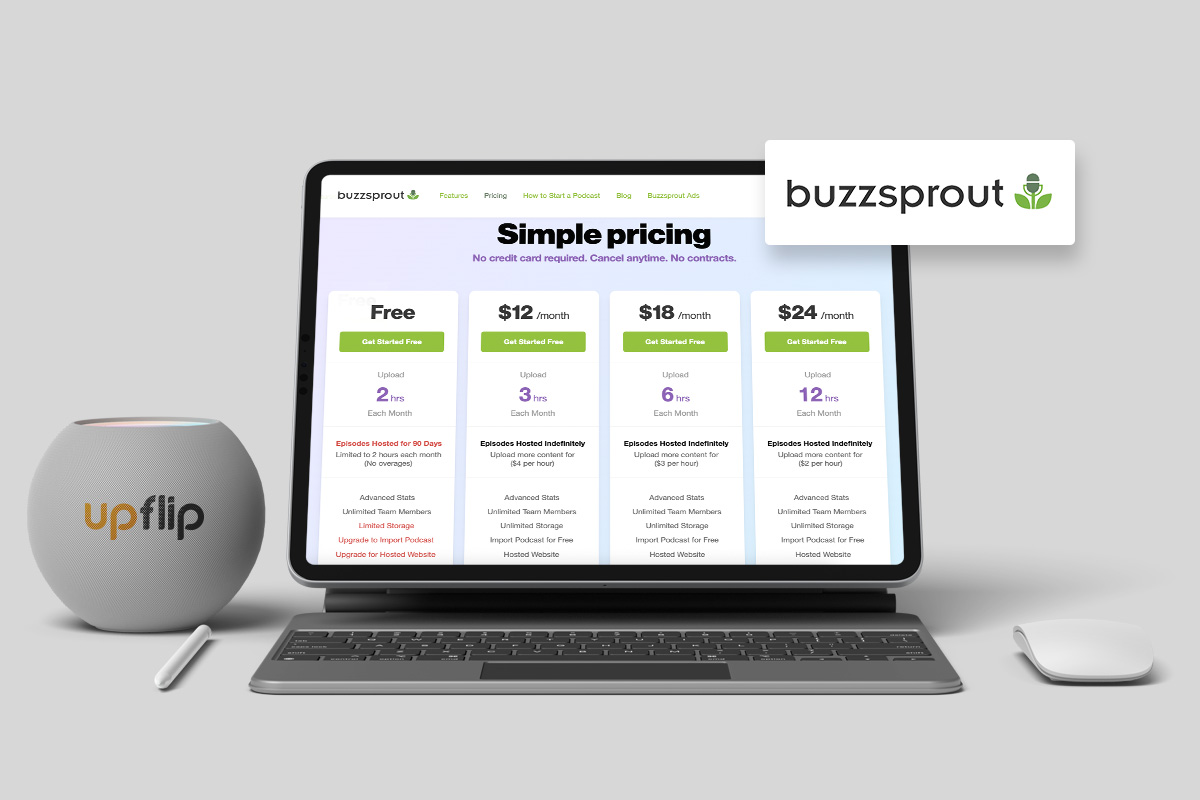
Buzzsprout.com is the largest and most famous site. If you’re wondering how to start a podcast for free, you’ll want a Buzzsprout podcast. The free Buzzsprout plan allows 2 hours of podcast a month, which is perfect for getting started. The catch is there are limited features and the podcasts only stay available for 90 days.
You can move to the upper Buzzsprout price tiers to get all the additional Buzzsprout podcast features for as low as $12 for better features. Buzzsprout pricing is solely based on the length of uploads and encompasses these advantages:
- Podcast Listed on 12 Directories
- 90-Day Free Trial
- Magic Mastering
- Payment Processing
- Buzzsprout Ads
- Transcription
- API for Integrating Other Tools
You can go to the Buzzsprout login page to get started podcasting.
Simplecast
Simplecast is the most tech-savvy of the podcast hosting sites, but it has limits on the number of downloads in each plan. These plans have different features based on how much you pay.
Take a look at their website because it’s challenging to cover all the info in just a few bullet points, but I would say this provider is best for people who want for their audience to easily share podcast sound clips.
Podbean
Like with other hosting sites, you can start a podcast for free for Podbean, but you’ll have to pay for additional features. Podbean free podcast holds five hours of free audio footage, but does not work well for video podcasts and lacks the ability to make money podcasting.
The $29 plan is the one you’ll want to go with if you’re looking for a podcast RSS feed you can monetize or provide video with.
- Cover Photo Creator
- Monetization
- Live Streaming features
- Instant Alexa Availability
Remote Recording Software
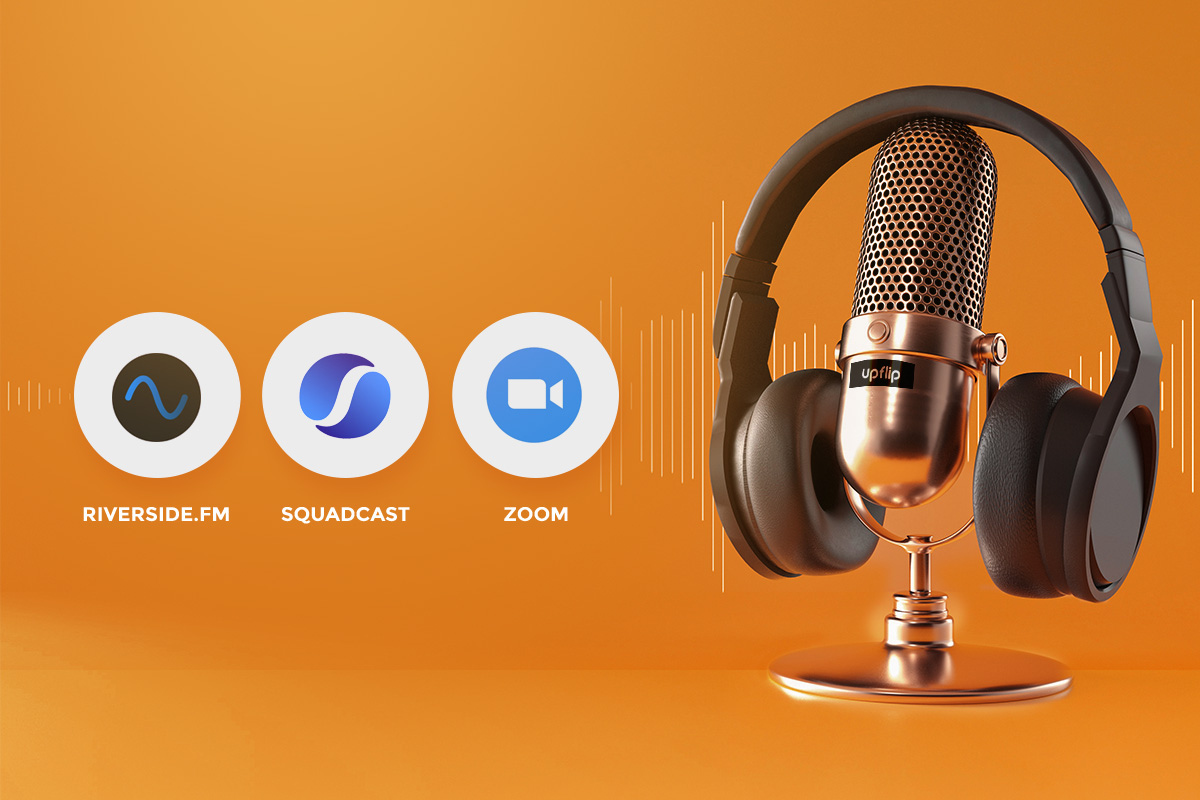
Costs can add up quickly if you have to pay podcast guests to fly all over the world to talk to you, so most successful podcasts interview people remotely. It’s better to use long-distance recording software to talk from wherever people are located.
In addition to many of the hosting tools offering remote recording software, you might want to try these:
- Riverside.fm
- SquadCast
- Zoom
Keep reading to find out more about each of these software options.
Riverside.fm
This software produces studio-like sound, but is only necessary if you don’t find the remote recordings from your hosting worth using. Benefits include:
- Free Trial (but $29/month plan is useful)
- Separate Track for Each Audio Channel
- Continuous Uploading
- AI Transcription
- Editing Software
- Studio-quality recordings
Check out Riverside today.
SquadCast.fm
The biggest selling points of this remote recording software is the high-end packages offered by Dolby. Other than that, I can’t tell much of a difference between SquadCast and Riverside.
Based on the fact that Kate uses the Libsyn software for recording, I suspect it’s not worth the extra $80 for Dolby surround sound. Learn more about SquadCast.
Zoom
You can use Zoom for remote recording, but you’ll need a good internet connection. A business podcast or interview podcast would only want to use this if you are starting a free podcast or it is an interviewee’s first podcast.
Editing Software
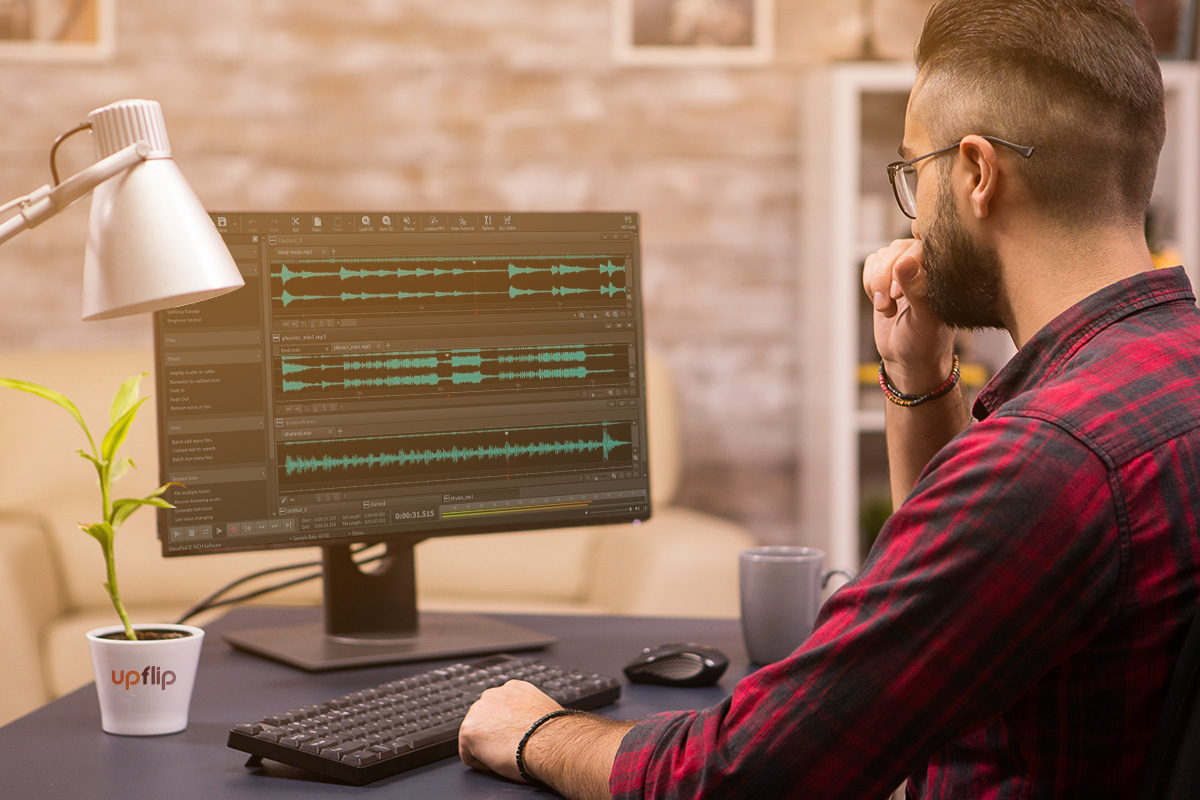
EOFire uses Adobe Audition, part of the Adobe Creative Cloud, but you can also use editing tools like:
- GarageBand
- Audacity
- Descript
Adobe Audition
Adobe Audition is the podcast editing tool that is part of Adobe creative suite. If you use Adobe products already, you’ll probably find this is the best option. Personally I find Adobe products outdated, but they recommend this software at EOFire.
GarageBand
Most Apple PCs have GarageBand, but you can also use it on Android or Windows Computers. Learn how to use Garageband. It’s not as sophisticated as some of the other tools, but it’s free.
Audacity
Audacity is less complex than Adobe Audition but more advanced than GarageBand. If you’re using Linux, Windows, or Mac, you can use Audacity. Check out one of the better Audacity tutorials below.
Descript
Mac and Windows users can use Descript for all their audio file needs, including recording, editing, mixing, and transcription. It even lets you do text-to-speech editing if something doesn’t sound right or someone gives incorrect information. Just be careful about using this feature to mislead people.
Other Podcast Software
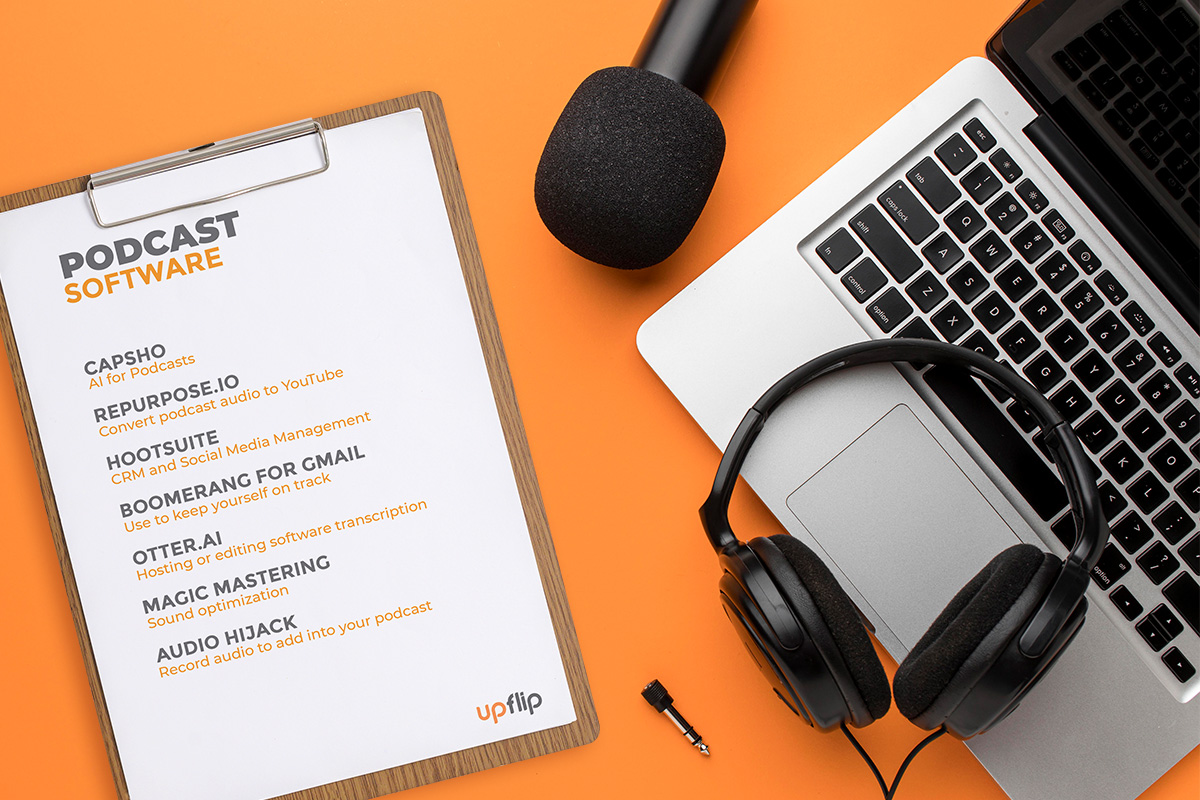
You might also want to consider these tools:
- Capsho: AI for Podcasts
- Repurpose.io: Convert podcast audio to YouTube
- Hootsuite: CRM and Social Media Management
- Boomerang for Gmail: Use to keep yourself on track
- Otter.ai: If you don’t have transcription in your hosting or editing software, Otter.Ai works well.
- Magic Mastering: Buzzsprout add-on that optimizes sound for you
- Audio Hijack: Record audio to add into your podcast, such as sound effects
Start 6. Start Recording Podcast Episodes
Now it’s time to start recording podcast episodes. To record your first episode of a podcast, you’ll want to:
- Prepare a script.
- Setup your equipment. Don’t forget headphones.
- Setup your software. (The ideal sound level is below -16 Loudness Unit relative to Full Scale (LUFS); anything higher will cause your sound to be reduced on Apple Podcasts).
- Do a test recording to check for mic placement.
- Make sure to have each sound recording on a separate channel.
- Record the podcast and use your notes. As long as it’s not livestreamed, you can correct your mistakes by restarting the sentence or paragraph.
- Save the files and get ready to edit.
You should expect the process to take 2-3 hours per 30 minutes of recording for your first episode. You may be able to record multiple episodes in a day, but get used to speaking before trying to do that.
Check out more starting a podcast tips on Riverside.fm.
Step 7. Edit The Podcast Episode
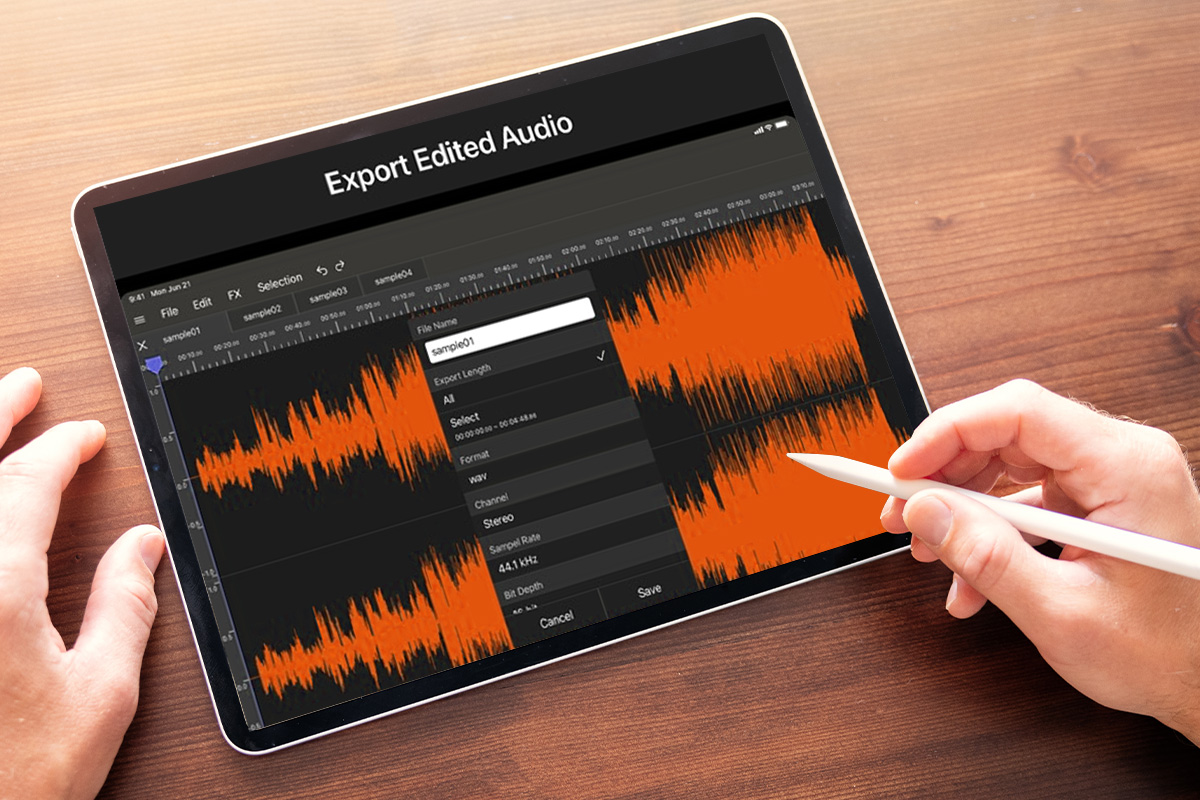
Next, you’ll want to go into your editing tool and do the following tasks.
- Import audio file into your editing tool.
- Remove any unwanted sounds like “uhm,” mistakes, awkward silences, and background noises.
- Add intro & outro music.
- Fix any volume discrepancies.
- Add the intro and outro.
- Export audio file and upload podcast to an AI editing tool if your primary one doesn’t have auto-balancing and other AI features.
- Save file as an MP3.
Now you’re ready to create a cover photo that will be shown in each podcast app.
Step 8. How To Create Podcast Artwork
Cover art should be consistent across episodes. You can use the cover art creators that are in most podcast hosting platforms.
Make sure the file meets all the directories’ specifications. The majority of podcasts are listened to on Spotify, Apple Podcasts, and Google Podcasts. That means as long as you create a png or jpg that is 3000 x 3000 pixels at 72 ppi using sRGB color profile, you should be fine.
You’ll want to view your cover art at a size between ¼” to 1” because those are the sizes your listeners will see on mobile devices.
Step 9. How To Add Podcast to BuzzSprout
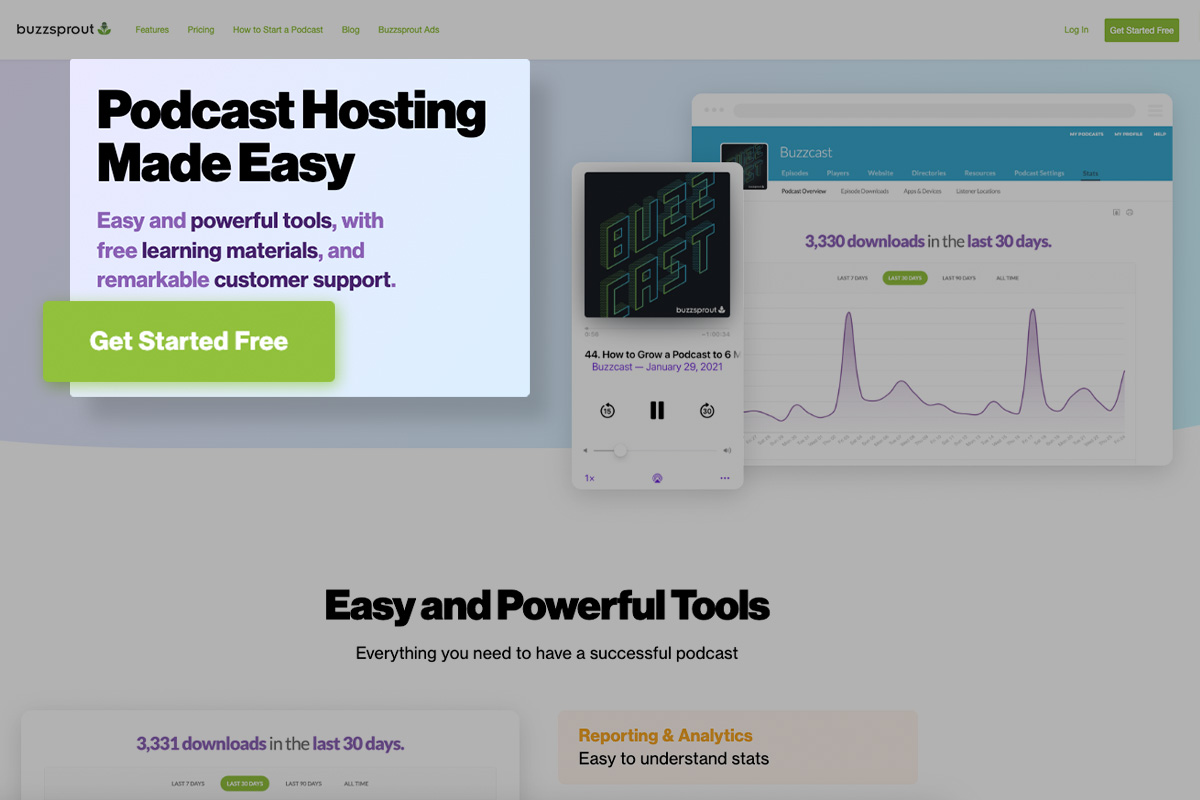
Now it’s time to upload your audio files to your podcast host platform. Perform the following steps to add a podcast.
- Select “Upload New Episode”
- Upload the audio file
- Add the title, description, and cover art
- Select publishing time and date
- Save episode
- Schedule to share it to social media using a tool like repurpose.io
Other websites will have similar workflows, but I figured it makes sense to provide the information on BuzzSprout because it is the site the most people use when wondering how to start a free podcast.
Step 10. Apply for Other Podcast Channels
Most high quality podcast hosting sites add your podcast episodes to other directories. For those wondering how to start a podcast for free and make money, you’ll probably have to register for each directory on your own. We’ll cover:
- How to start a podcast on apple for free
- How to start up a podcast on Google
- How to start a podcast on Spotify for free
- How to start a YouTube podcast
How To Start A Podcast On Apple Podcasts
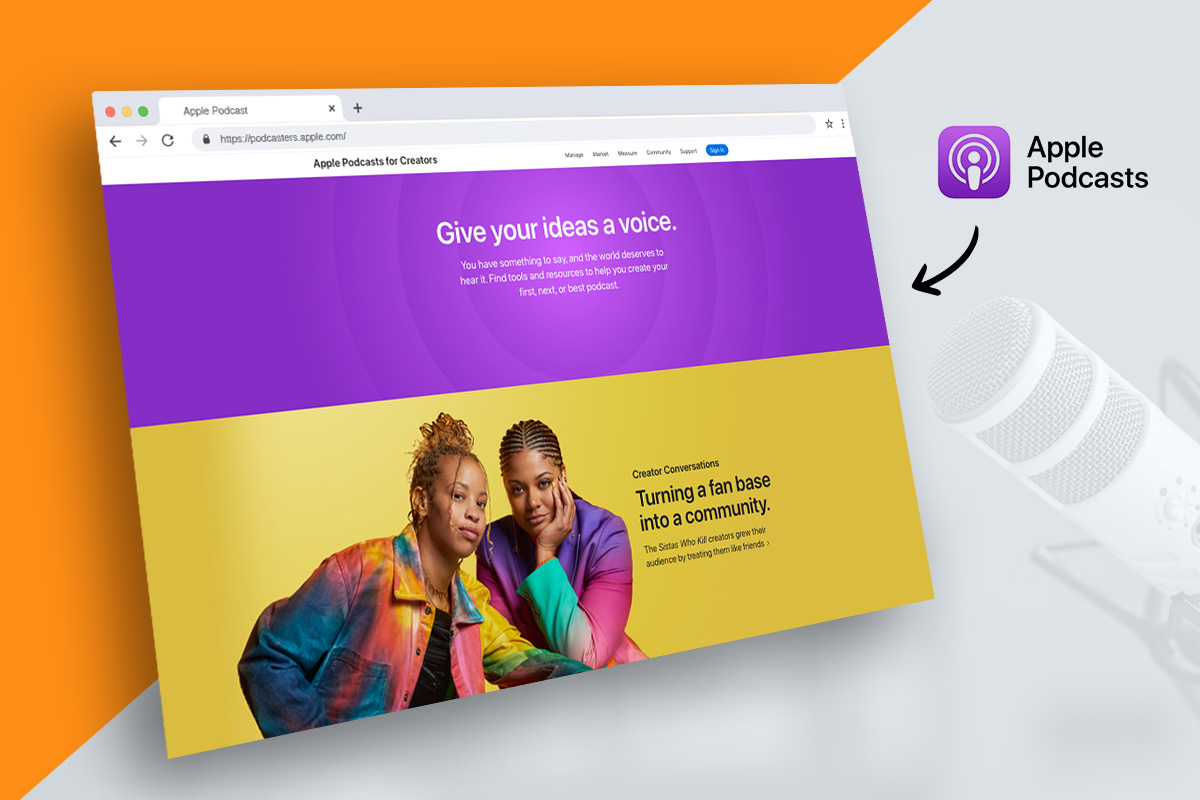
Follow these steps to start an Apple podcast:
- Go to Apple Podcast Connect to start an Apple podcast.
- Add a show either with an RSS feed or without it.
- Name the show. You can use up to 150 characters.
- Do not restrict access unless you have a reason you want a limited audience.
- Add artwork.
- Add a 4,000 character or less description.
- Choose a channel if you run more than one podcast or offer paid content.
- Select the type of series.
- Specify posting frequency.
- Add the Apple content category and subcategory.
- Mark explicit content if you talk about sex, drugs, violence, or have lots of cursing.
- Specify the language your podcast is in.
- Add your website URL.
- Add copyright information.
Apple Podcast for Creators has a ton of information about how to get the most out of the platform.
How To Start A Podcast On Google Podcasts
To start a podcast free on Google Podcasts, you’ll want to go to Google Support and follow the directions. You’ll need to:
- Create a public RSS feed.
- Create a homepage that links to the RSS feed.
- Use supported audio file types. No video files are allowed.
- Use consistent Https or Http.
- Add an art file, title, description, owner email, and homepage URL.
- Set up a Google Search Console and request indexing.
This is the most complicated option for those of you who wonder how to start a podcast free. You can also use Google Podcasts Manager.
How To Start A Podcast For Free On Spotify
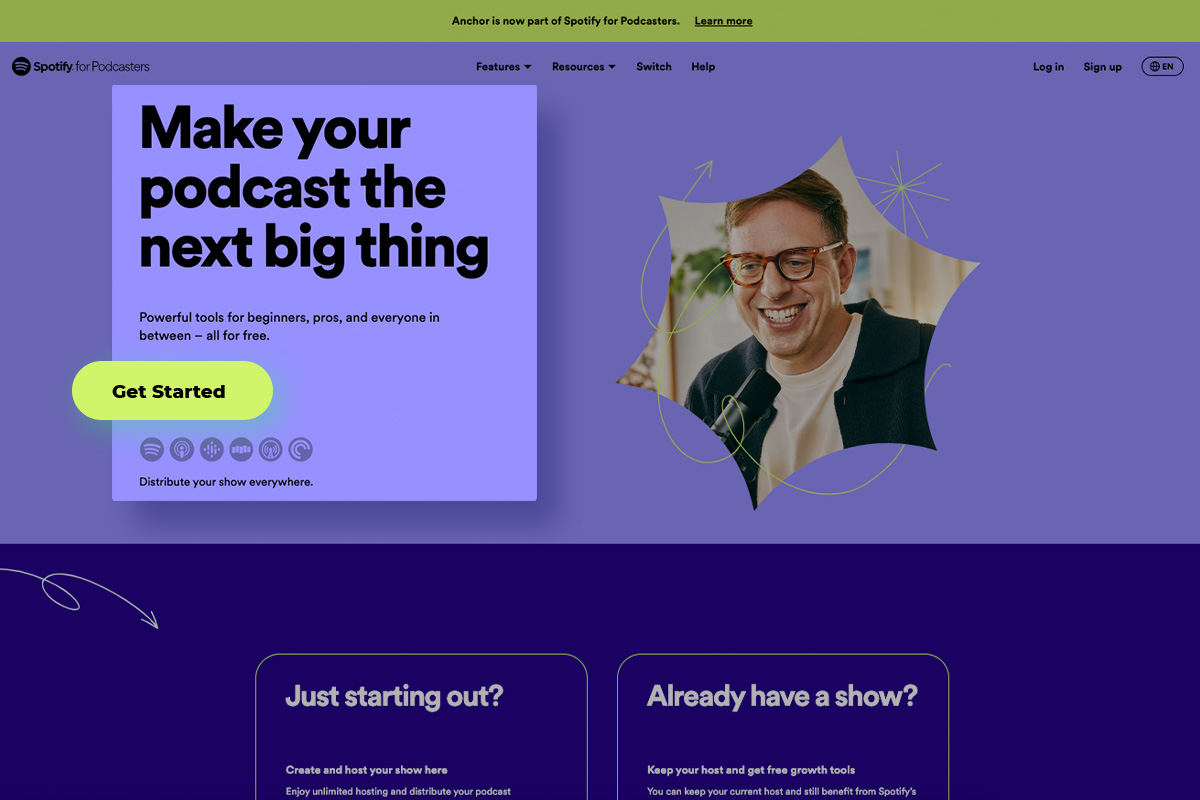
Go to Spotify for Podcasters (Formerly Anchor Podcast) and sign up for an account. For those wondering how much to start a podcast on Spotify, I’ve got good news—It’s free!
Let’s continue with how to start a spotify podcast. You have the option of creating a new podcast or moving your podcast.
- Name your podcast.
- Agree to service terms.
- Provide your RSS feed.
- Add Categories.
- Confirm Details.
So, it’s not hard to start a business podcast (or any other type) on Spotify.
How To Start A Podcast On YouTube
YouTube is primarily for video, but you can use it for live streaming and podcasts too.
2. Click Create, then “New Podcast” or “Set an Existing Playlist as a Podcast.”
3. Add Title, Description, Visibility, and Add a Square Cover.
4. Save the podcast and YouTube will convert the videos to a podcast. This allows them to be added to YouTube Music.
5. Add the YouTube Podcast Badge.
Youtube has extensive documentation on how to start a true crime podcast (or any other type). Find out how.
Step 11. How To Promote A Podcast
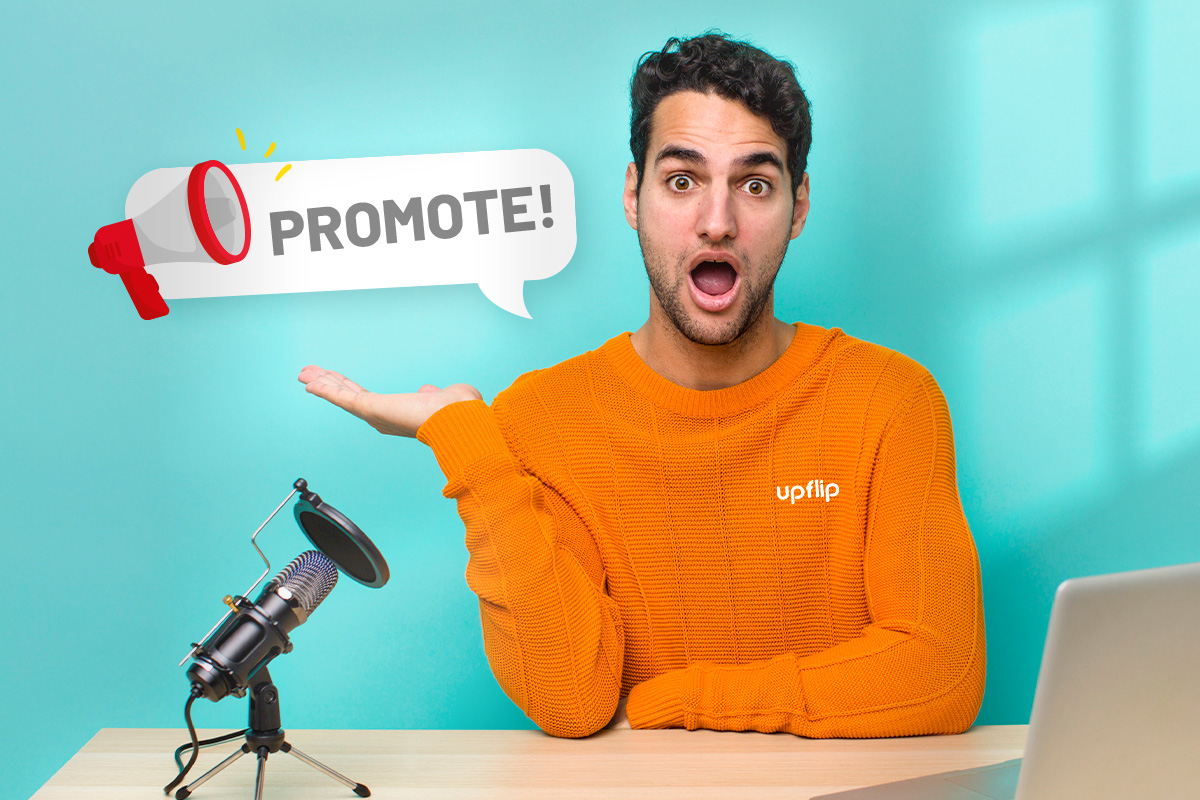
For those wondering how to start a podcast with no audience, you’ll want to consider the following advice:
- Create and upload three episodes before releasing the podcast
- Add transcripts to every episode
- Tease new episodes on social media before release
- Share new episodes 2-3x during the week
- Pull in followers from your guests
- Share short clips
- Convert to video because Google loves video
- Add to less common directories to get backlinks
- Run contests and promotions during your first six weeks to get on the New and Noteworthy iTunes List
- Encourage partners to share content
- Be a guest on other podcasts
Let’s look at some commonly asked questions about how to start a podcast network.
Podcast FAQ
How To Start A Podcast Script
To write a podcast script, follow this process:
- Research common search queries with an SEO tool.
- Create an outline of the questions people ask the most.
- Research each question.
- Write out a sentence and practice it.
- Use cue cards or a teleprompter.
- Be prepared to shift if someone answers questions without prompting.
What Do You Need To Start A Podcast?
Almost everything you need to start a podcast you should already have or be able to get for free. You’ll need:
- Computer or Phone
- Internet Connection
- Recording Device and Software (Use your phone recording software to get started)
- Editing Software
- Headphones
- RSS feed (Free ones are available)
How To Start A Video Podcast
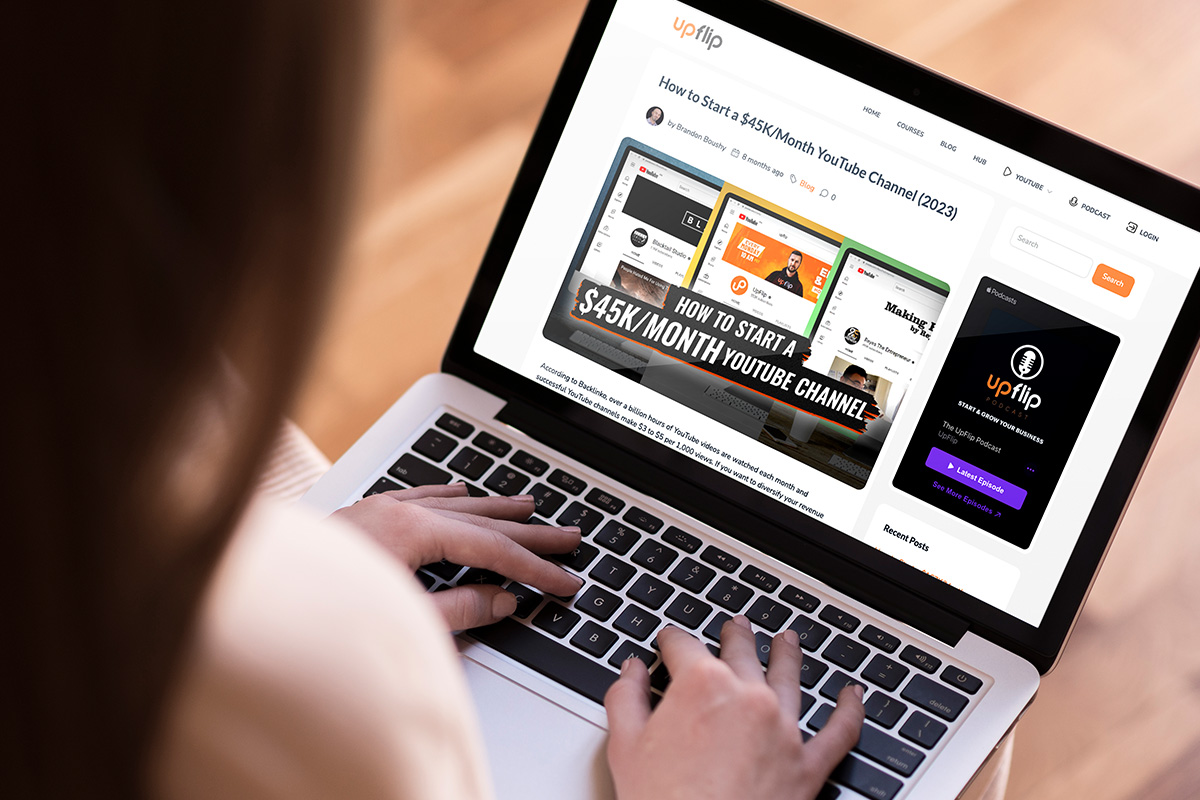
Starting a video podcast is similar to starting a YouTube channel. Here’s the process:
- Follow the directions in the link above.
- Convert the Channel to an RSS feed. Just do this by converting your YouTube Channel to https://www.youtube.com/feeds/videos.xml?channel_id=CHANNEL_ID. (Make sure to change “CHANNEL_ID” to your channel name.)
- Add the RSS feed to your podcast hosting and podcast directories.
- Upload new episodes.
- Market your video podcast.
Get Started Today!
Well, what are you waiting for? Now you know how to start a podcast. You can even start the podcast for free.
What podcasting subject would you like us to cover next?
- How to start a sports podcast
- How to start a business podcast
- How to start a podcast on iphone
- How to start a podcast network
- Something else – Tell us in the comments!



